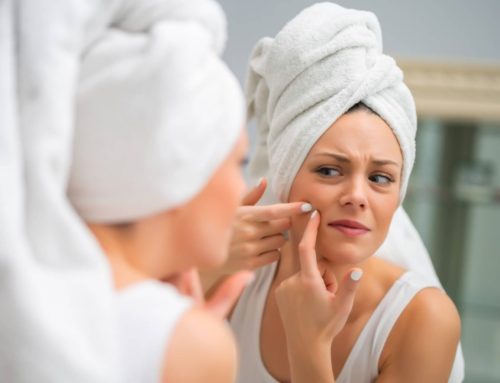
The problems caused by acne don’t always stop when your breakouts end. Fortunately, there are aesthetic treatments available to eliminate these unpleasant reminders that can also be crippling to our self-confidence. Spread the word that acne scars don’t have to be permanent!
What are acne scars?
Scar tissue is comprised of the same protein (collagen) as the tissue that it replaces, but the fiber composition of the protein is different. Instead of a smooth “basket weave” formation of fibers, the collagen in scar tissue is aligned in a single direction resulting in a pronounced and thicker appearance.
Acne scars result after skin follicles become blocked by excessive oils and the physiology of keratin and old skin cells trigger an inflammatory response reaction. The skin will attempt to heal and scar tissue will form as the collagen becomes deformed and thickens. Acne scars are categorized as being “ice- pick”, “rolling” or “boxcar.”
Aesthetic Treatment Options
1. eMatrix Sublative
eMatrix is clinically effective for acne scar revision as well as fine lines, loss of collagen, wrinkles, skin tone, and stretch marks. The secret behind eMatrix is the FDA-cleared technology known as sublative rejuvenation, which goes far beyond current methods in skin rejuvenation. This treatment employs fractionated bi-polar radio frequency to penetrate the skin, thus allowing more energy beneath the surface to amplify collagen production while keeping the top layer of the skin intact. New collagen and healthy skin cells are produced post-treatment, reducing mild to moderate acne scars, wrinkles, superficial skin discolorations and skin lesions.
2. IPL
Acne scars can affect both the color and texture of the skin. Scars may appear as small dents in the skin’s surface or as raised scar tissue. In either case, scaring creates uneven pigmentation in the form of redness or dark spots. Because Intense Pulsed Light can target pigments cells specifically, IPL treatments are effective for evening out discoloration, which dramatically reduces the visibility of acne scars and gives the appearance of a more uniform skin surface.
3. Chemical Peels
A chemical peel exfoliates the outer layer of the skin, which is usually dry and rough, to uncover a smoother and healthier layer beneath. These newly exposed layers are less affected by scarring. This is an ideal treatment for acne scars because texture irregularities, pigment concerns and clogged pores are all drastically improved.
4. Microneedling
This advanced technique, which involves “skin-needling,” can break up fibrous and uneven scar tissue and encourage the growth of new tissue. Ultra-fine, surgical strength micro-needles cause new collagen and elastin to be deposited (collagenesis), new capillaries to be formed (angiogenesis) and new skin cells to be created. This maintains the integrity of the epidermis, allowing it to remain fully intact, which also quickens healing time and causes less pain.
Retin-A
Retin-A (tretinoin) is a form of vitamin A that helps the skin renew itself. Not only does it treat acne, but it improves the appearance of acne scars by regulating and speeding up skin cell turnover. For acne, this means that the debris in the pores that attracts acne bacteria is sloughed off in order to prevent the formation of acne. This also prevents and treats the formation of non-inflammatory acne, or blackheads and whiteheads, on the skin. For acne scarring, the collagen in the skin is produced more rapidly, which can improve the texture of acne scars.




